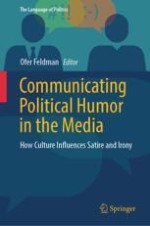2024 | OriginalPaper | Buchkapitel
13. Depicting “La Grieta”: The Role of Political Satire and Humor in Argentinean Polarization
verfasst von : María Isabel Kalbermatten
Erschienen in: Communicating Political Humor in the Media
Verlag: Springer Nature Singapore
Aktivieren Sie unsere intelligente Suche, um passende Fachinhalte oder Patente zu finden.
Wählen Sie Textabschnitte aus um mit Künstlicher Intelligenz passenden Patente zu finden. powered by
Markieren Sie Textabschnitte, um KI-gestützt weitere passende Inhalte zu finden. powered by
